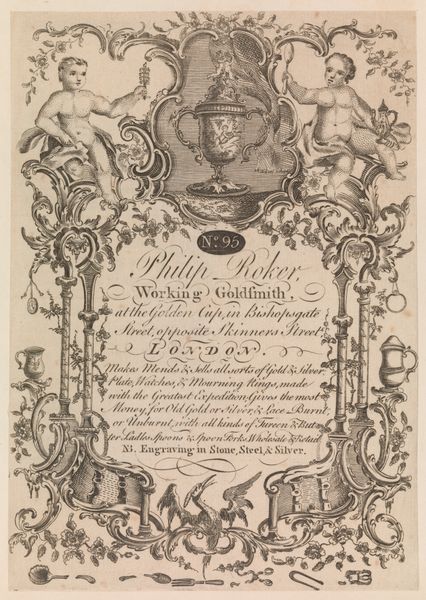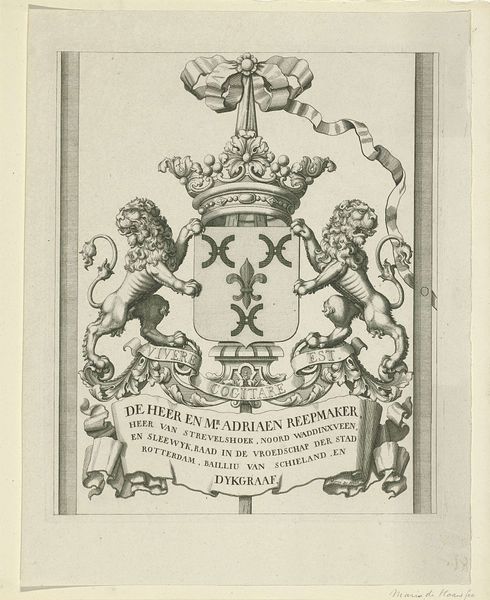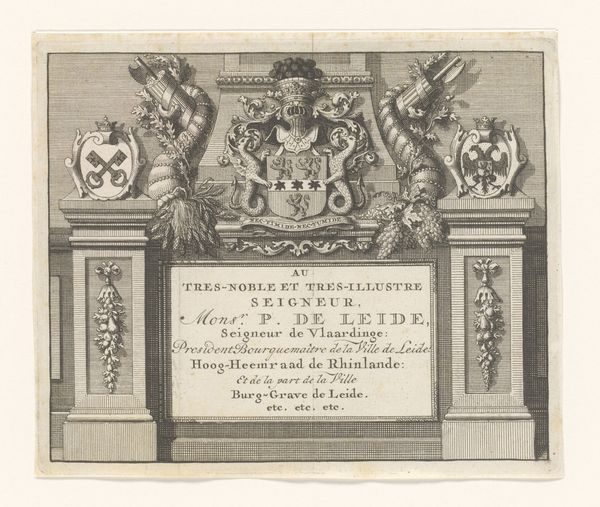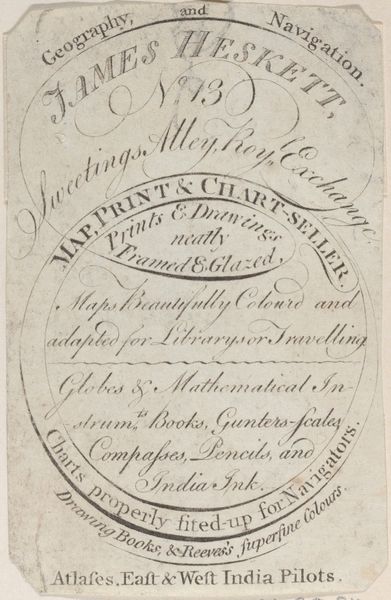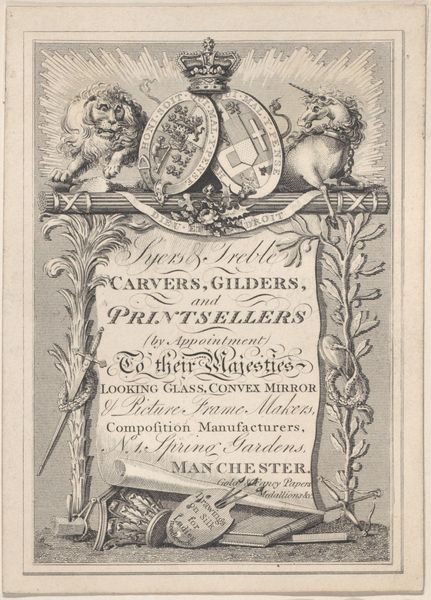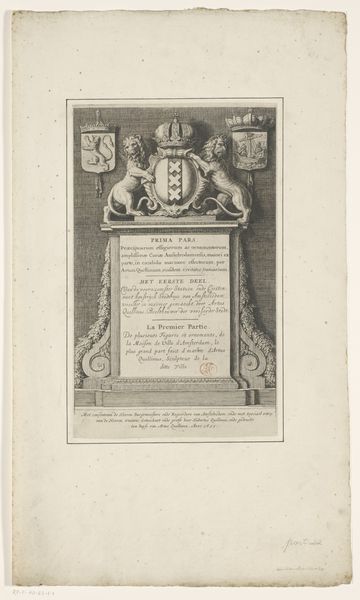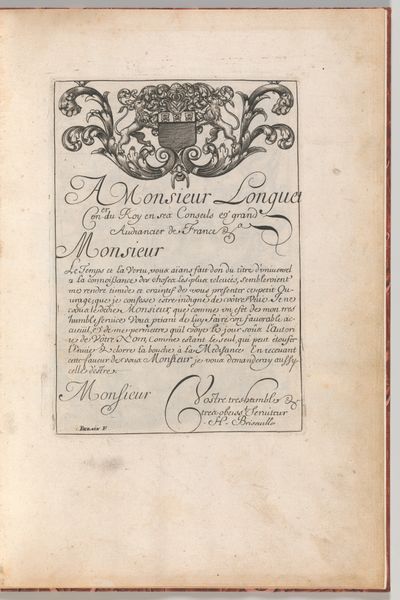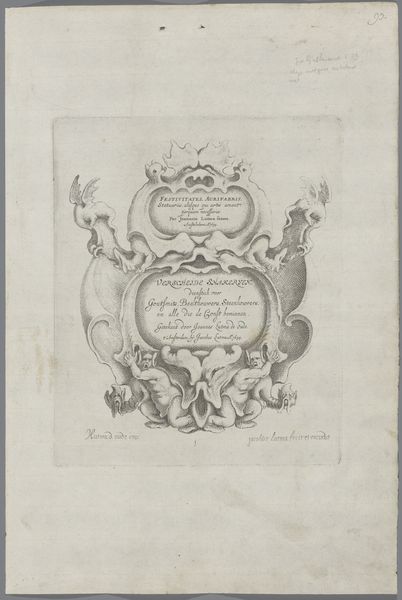
Trade Card of Richard Hand, The Oldest Original Chelsey Bunn Baker 1718
0:00
0:00
drawing, graphic-art, print, engraving
#
portrait
#
drawing
#
graphic-art
#
baroque
# print
#
decorative-art
#
engraving
Dimensions: Plate: 6 7/8 x 5 1/4 in. (17.5 x 13.3 cm) Sheet: 8 11/16 x 6 1/8 in. (22 x 15.5 cm)
Copyright: Public Domain
Editor: This is "Trade Card of Richard Hand, The Oldest Original Chelsey Bunn Baker" created around 1718, by William Hogarth. It’s an engraving and reminds me of fancy lettering I see on older labels. What's particularly interesting to you about it? Curator: For me, this isn’t just decorative art; it’s a window into the material culture of the time. The "Oldest Original Chelsey Bunn Baker" phrasing itself highlights the emerging emphasis on brand and origin. It demonstrates how printed material shaped perceptions of artisanal quality. Editor: That makes sense. How did these kinds of prints affect everyday life? Curator: Think about it: before mass media, these trade cards were crucial for connecting producers to consumers. The mention of serving the "Royal Family" adds a layer of social class and aspiration. Note also how it elevates baking to a near aristocratic level through associations with royalty, promising certain clientele who consumes it to ascend the ranks. The materials – paper, ink, the printing process itself – democratized access to imagery and information in a way previously unimaginable. This little card tells a whole story about labour and social climbing through the market. Editor: I never thought of it that way, that a baker could use his Royal association as branding. That gives me a lot to think about, considering how different materials shaped consumer culture! Curator: Absolutely. By thinking about the material processes of production and social context surrounding their circulation, it unlocks the relationship between high art, craft and capitalism itself. It underscores art's imbrication within wider webs of making, meaning, and consumption.
Comments
No comments
Be the first to comment and join the conversation on the ultimate creative platform.

